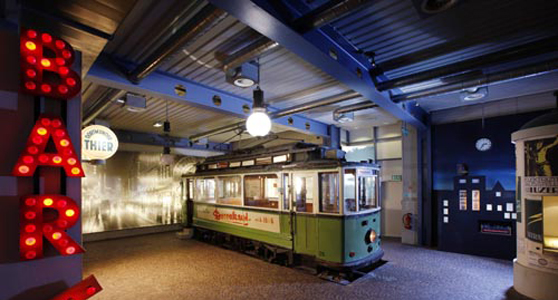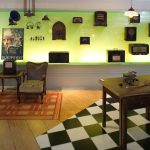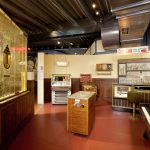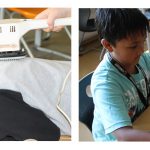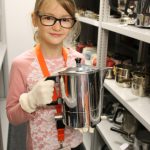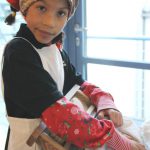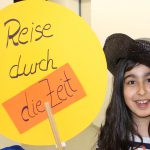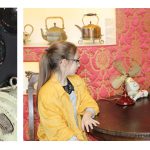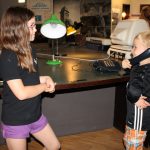‘The whole exhibition becomes the stage…’ – a journey through time by children for children as a new approach to peer learning
Article DOI: https://dx.doi.org/10.15180/180911
Keywords
children as museum guides, educationally disadvantaged children, extracurricular place of learning, museum club for children, museum education, Museum of Electricity and Life, participation, project work with elementary school children, target group, visitor engagement
The Museum and its visitors
https://dx.doi.org/10.15180/180911/001The Substation Recklinghausen was built in 1928 as an indoor substation. Recklinghausen is the northernmost city in the Ruhr area of Germany and the capital of the Recklinghausen district. The southern part of the town was deeply linked to the mining industry, and the substation, on the outskirts of the town, supplied the coal mines and the adjacent residential area with electricity. Today, the substation is a unique combination of a listed heritage site, a technical monument and a working electrical substation, equipped with two modern gas-insulated switchgears.
Since December 2000 the site has also been home to the Museum of Electricity and Life[1], an exhibition with about 3,000 square metres of floor space. The Museum takes its visitors on a journey through time, exploring the cultural, social and technical history of electrification.
As a source of energy for light, heat and power, electricity found its way into private households in the early twentieth century, although a lot of devices derive from developments in the late nineteenth century. The implementation of more and more devices during the course of the following decades caused fundamental changes in all spheres of life.
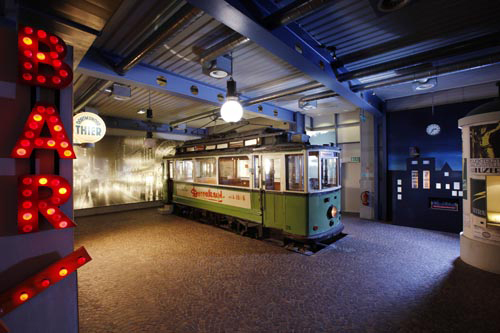
In order to display these transitions comprehensively, to communicate the past and support understanding, the exhibition concept for the most part avoids presenting widely used everyday objects in showcases without functional context. Instead, the objects are embedded in a designed room with some carefully chosen set dressing to trigger memories and emotions. The four parts of the exhibition portraying domestic life between 1910 and 1980, for example, have painted floors, carpets and tiles typical for the respective period: a precious Persian rug in a living room stands for the wealth of a household of the 1910s; colourful linoleum in a kitchen indicates the new modernity of the late 1950s; and a flokati rug evokes an impression of the 1970s.
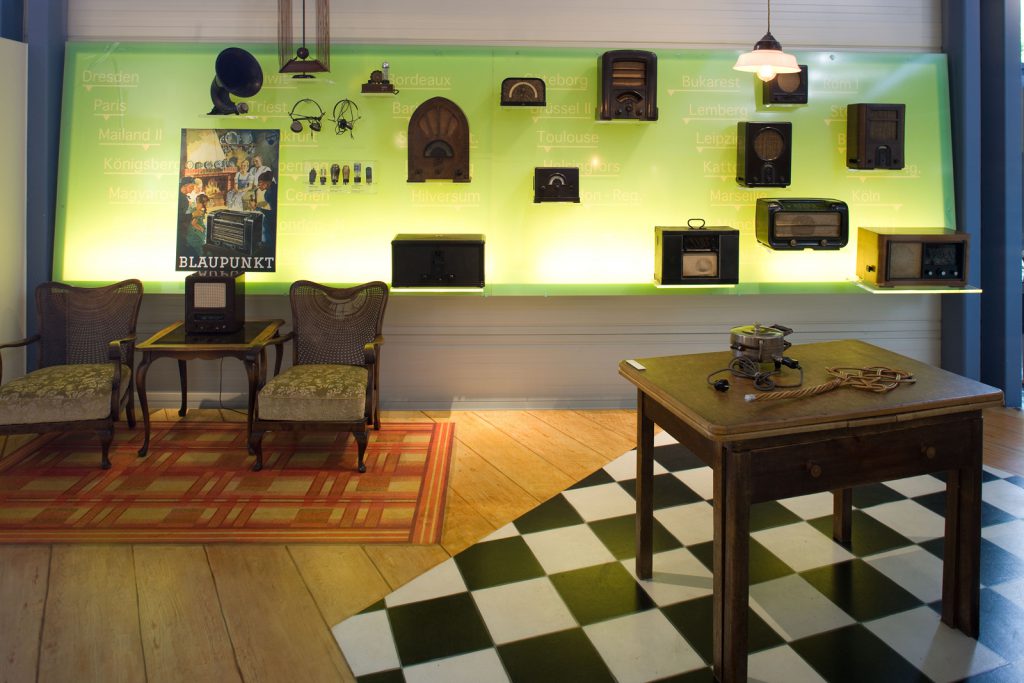
Where possible original furniture is used to help present the exhibits. Kitchen cabinets coated with pastel resopal – typical for the late 1950s – hold all kinds of kitchen appliances. A shelf rack made of dark wood serves as a presentation area for all the electric devices people used to purchase for entertainment or decorating their living rooms in the 1970s. In addition, several original chairs invite visitors to relax, listen to historical radio recordings or watch old TV programmes. The staging – even where it is lightly indicated – aims to deliver a historical narrative, providing both interpretation and communication, and hopefully making exhibits meaningful to visitors.
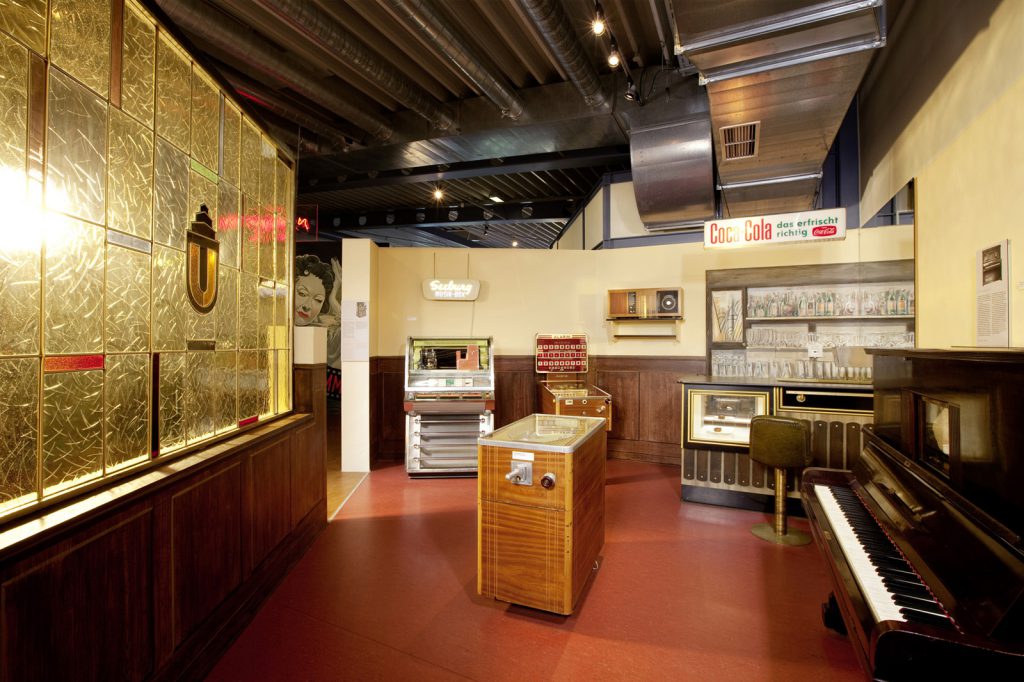
A special feature of the Museum is that visitors are allowed to touch the exhibits, which enables audiences to engage directly with the objects, reducing reservations about coming into contact with exhibitions in general, and making it easier for them to understand the phenomenon of electricity specifically. Some exhibits will cause surprise, other will invite visitors to stay longer and give an exhibit or an activity a try. Trying something out will always have a more memorable impact than any theoretical attempt at a description of an object.
This ability to interact makes the Museum suitable for a wide range of audiences. The visitor profile of the Museum is very diverse: the spectrum extends from the very young to the very old, from the technology-focused to the non-tech-savvy, and from individual visitors to pupils in educational or other groups. But, like every other museum, our objective is to increase the number of visitors, including trying to access new target groups[2] while reaching non-visitors as well.
For the Museum of Electricity and Life, non-visitors include low-income families living in our urban district. The Museum is located in a socially deprived area with a high proportion of children living in socially and financially disadvantaged households, for example in single-parent families, larger families, families with unemployed adults and/or families with a migration background.
It is well-researched that disadvantaged families participate less in cultural activities. In recent years, numerous studies have addressed the correlation between level of education and cultural participation and provided evidence of the close connection between social background and cultural inclusion.[3]
On the one hand these families cannot afford to spend money on entrance fees to theatres, exhibitions and museums, on the other hand they tend to see these activities as uninteresting (Birgit, 2017), and sometimes even as useless and irrelevant because learning or educational offers for children beyond school lessons are not high priorities for these social groups.[4]
The Museum’s executives, however, believe that they have not only an educational responsibility, but a social responsibility too. Providing educationally-disadvantaged young people with opportunities to participate in cultural life will help them to develop new competences and enthusiasms that can form a basis for further learning.
Within our financial limits and staff capacities we had made many efforts in the past, but had not been able to reach this group. We needed funding to develop a strategic plan and to implement a new approach for a project.
The funding project 'Kultur macht stark. Bündnisse für Bildung'
https://dx.doi.org/10.15180/180911/002In summer 2015 we linked up with a programme called Culture makes us strong. Alliances for Education set up by the German Federal Ministry of Education and Research.[5] The funding programme was launched in 2013 to promote extracurricular projects with cultural content for disadvantaged children and young people to provide an opportunity for these children to develop new perspectives, strengthen their personality and create a foundation for lifelong learning. The Ministry of Education and Research collaborated with funding agencies from several cultural sectors, the German Museum Association being responsible for the majority of museum projects.
This programme exactly met our objectives and the project we hoped to establish could qualify for support. With this end in view, we developed a detailed concept for an experimental pilot project called Von Funkenkutsche, Dampfradio und Flimmerkiste – a title which does not have an adequate English translation, but which, translated literally, would read ‘About spark carriage, steam radio and flicker box’.[6]
Briefly summarised the project concept had the main objective of giving children from educationally disadvantaged families living in our district the chance to take a hands-on approach to museums. It emphasised the importance of demonstrating that museums can be exciting and fun and thereby make children less apprehensive about visiting exhibitions.
The children taking part would be at primary school and aged between 8 and 12 years. To arouse the interest of the target group and convince children to join the project, staff would visit eligible schools and present the project.
The participants – we planned for at least seven, and hoped for around twelve – would visit the Museum for three hours each Friday over a period of three or four months. The project would be led by two external museum educators.
In the first part of the project the children were expected to become familiar with the exhibitions as well as the back offices and departments of the Museum. In the second phase a script would be developed in order to create a play on the history of electrification. With the assistance of an experienced drama teacher the children would rehearse their assigned roles. And finally, by performing the theatre play as the completion of the project the children would share their new knowledge with their peer-group.
The Museum submitted an application for funding together with a timetable, a cooperation agreement[7] and a calculation of expenditure to the German Museum Association in October 2015.
Our request was approved in December on condition that the project was put into practice between 15 February and 31 July 2016.
The implementation of the pilot project
https://dx.doi.org/10.15180/180911/003Preparatory phase
As the official start of the project was 15 February 2015 we used the time in the run-up to it to deal with necessary organisational issues. Drawing up the participation forms with all the necessary personal details required, such as addresses, emergency contacts, medical conditions, photography permits and so on, would save time in the long run. Furthermore, we conducted preliminary meetings with our alliance partners to inform them of the successful application and coordinate our future plans.
It was of fundamental importance at this stage to map out a strategy to address the needs of the target group. Our offer was designed to reach educationally disadvantaged pre-teenagers, aged between 8 and 12. In line with the funding guidelines, which focused on extra-curricular projects, we were not allowed to invite school classes or to carry out the project during school hours. Yet in practice it is nearly impossible to reach children of this age during their spare time. After careful consideration we decided that the most appropriate way of reaching out to the children was to visit the after-school clubs attached to the primary schools. One of the advantages of this approach is that the club staff can choose children who would most benefit from the project.
Although our alliance partners put us in touch with the people in charge of the after-school clubs, the co-ordination process was time-consuming. While we knew many teachers and even directors of the primary schools, we did not know the staff responsible for the after-school clubs. Most of these educators were unaware that the Museum even existed, let alone knew our staff. A lot of long and intensive discussions were necessary until the schedule for the outreach programme was complete. In mid-February the project finally started. The implementation was carried out in several phases, described below.
Step 1: Outreach phase – gaining participants
The initial contact with potential candidates always took place in the premises of the after-school clubs.[8] The familiar surroundings and the company of classmates encouraged an easy and comfortable atmosphere and prevented any sense of stigmatisation because of participation.
The educators visited seven local primary schools and brought the Museum right into the classroom. Our ‘Museum suitcase’ with a collection of funny, unusual, or intriguing items inspired the children to ask a lot of questions. The Museum educator took advantage of their curiosity and not only explained the purpose of each item, but told some interesting, funny or even obscure stories about former times as well. They encouraged the children to imagine life without electricity and to imagine how the invention of the electric light bulb or an electric hotplate made life easier and safer for people. Some of the historical devices were still in working order and the children enjoyed toasting bread, receiving a massage, or feeling a cup gradually warming because of an immersion heater inside it.
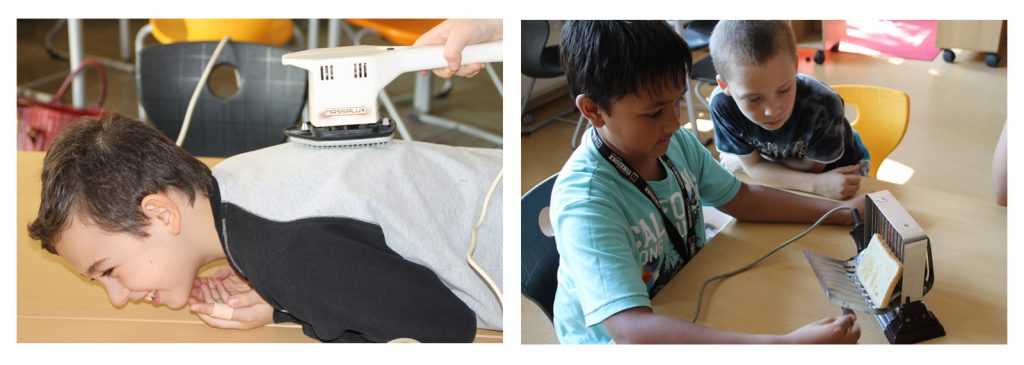
Children who showed interest in participating were given a letter for their parents with a short description of the project. Some children, mostly girls, clearly wanted to take part, but weren’t allowed. Our project partners, the educators and our staff tried their best to convince the parents, but in most cases without success.[9]
Parents who had given permission for their children to join the project were sent a second letter inviting them to a parents’ evening at the Museum. The letter was jointly signed by the after-school club staff members and the Museum director and discussed practicalities such as supervisory duties, transport and other necessary legal and organisational issues. Although we offered a selection of dates, some parents did not come to the meetings, some sent their eight-years-olds in their place to sign the forms, and some were accompanied by a child to translate. But it was clear that there were families who were very happy about the opportunity for their children to have a valuable activity on a Friday afternoon.
As a result of the outreach phase, fourteen children registered to attend the project – twice as many as the funding guidelines required.
Colleagues from other museums, who had already carried out projects in the preceding years, warned us to expect that a lot of children would drop out in the course of time. We wanted to prevent this with all means available. From the beginning our concept included a lot of playful elements, a high degree of variety and emphasised the importance of teambuilding. Therefore, from the moment the group visited the Museum for the first time, the primary objective was to build a strong team spirit and this issue marked and characterised the second step.[10]
Step 2: First meetings – becoming part of a team
Building a strong team is not only important for the children themselves but is also an essential requirement for a successful project. In this case the children, who came from six different schools, had to adjust to a new and unknown peer group; they had to learn to support each other, to plan and work together with a common objective, over a long time period. The project intentionally included elements of shared experiences in the meetings to foster cohesion of the peer group. If the children had the dedication and perseverance to participate throughout the project, that participation would also strengthen their social competences and skills.
The first team meeting took place early in April[11] and started with a round of interviews, with soft drinks, juices and cake provided. After all of the participants had introduced themselves and received a lanyard with a name tag, we talked about our plans for the following meetings. Then the meetings started in earnest.
First of all, the group visited some back office rooms, such as the staff kitchen, where they could always find drinks. They were introduced to other Museum employees as new team members whose role was to act as ambassadors for the Museum. Employees were briefed to take the children seriously and make them feel important.
It was a priority for us that the children identify with the Museum and feel a sense of belonging to it. The children generally had low self-esteem, therefore it was important to strengthen their sense of confidence and self-reliance. We tried to accomplish this by means of teambuilding and integration into the Museum team. The children had permission to enter rooms visitors are not allowed to access, they were promised free entrance to the Museum all the time – even after the end of the project – and they were given the same customised polo shirts with the Museum logo that all Museum employees wear.
Although not part of our original plan, some aspects of the schedule of the first day became ritualised very soon and became essential elements of each Friday afternoon: the children arrived and fetched their polo shirts and lanyards. The initial purpose of these lanyards had been to make it easier for everybody to remember names during the first meeting, but for the children the lanyards had an importance far beyond that. The lanyards and name tags became an identification badge they put around their necks each and every time, even when the bulky name tag interfered with the costumes during rehearsal. Properly dressed and equipped they romped around for about ten to fifteen minutes releasing the energy built-up during a long school day. Then without being prompted they gathered in our usual meeting room to have a snack and grab a quick drink.[12]
Only after the children had completed these rituals – which took approximately half an hour – could the museum educators start the workshop.
Step 3: Qualification of the team members – becoming museum professionals
To train the children for their task as ‘museum professionals’ and ‘museum ambassadors’ two workshops were developed. The first workshop was dedicated to getting to know the public exhibition, the second one to getting to know the non-public area and the different departments.
In total we scheduled five meetings (or fifteen hours) to accomplish the objectives of this step. However, to create a varied programme and to ensure that the entire group stayed highly motivated, the tours through the Museum alternated or were combined with parts of the second workshop. Apart from ensuring variation, this mixture of activity and shorter tours avoided the need for a single guided tour of longer than an hour and a half, which would have been tedious and inappropriate for children this age.
Two museum educators accompanied the children on their journeys of discovery through the exhibition and provided detailed information as well as answering any questions when deeper exploration of a hidden drawer or a cupboard brought another mysterious device to light. Each Friday the children experienced a tour with a different topic, familiarising themselves with various aspects of the exhibition.
On the first tour the group travelled back in time more than 150 years to when electricity did not play a part in daily life. Life without electricity is hardly conceivable to many people today, especially not for children. Therefore, the first topic was to imagine what it would have been like when there were no electric lights, no telephones, no washing machines, television or heating. How did people in the past manage their lives? Would we have been able to meet the challenges of a life without modern energy sources and overcome the resulting problems? The children were able to see how much time and effort was needed to complete simple everyday tasks without electricity. Because of this, modern appliances took on a new significance for them.
Old electrical devices compared to modern appliances was the main topic of the second journey with special attention on the development of electrification during the twentieth century.
With the third and last tour the group made a closer examination of early electrical appliances. Learning about the functional principles and potential hazards of the various devices was essential because the children would eventually operate some appliances as part of their play.
After exploring the exhibition in detail and getting acquainted with the topic as well as the history of electrification, the second workshop dealt with different subjects: ‘What is the role of a museum and does a museum need to fulfil other tasks besides creating exhibitions? What are the purposes of the various departments?’
One particularly popular feature was the opportunity to glimpse behind the scenes of the Museum and take a look at the storage rooms, workshops and the storage facilities for our object collections. The object stores turned out to be a highlight for the children. The museum educators taught the group how to inventory a new object, how to clean, measure, photograph and attach an object label. The children would have loved to go to the store on every visit to investigate the secrets behind the mobile shelving system. They often argued that as members of the Museum team they should be kept informed of all new acquisitions.
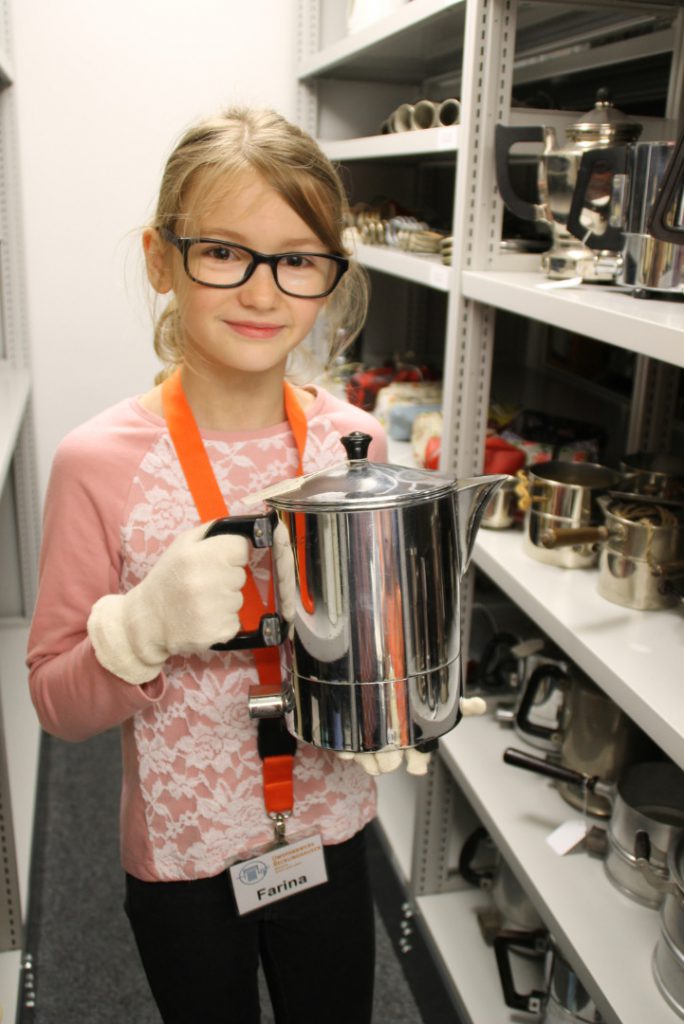
Also of interest to them were the storage for the handicraft materials and the stocks for our electricity workshops. The children were fascinated by the amount of construction sets the educational service uses for learning programmes. If they had had their way they would have constructed each and every model in the store. We did try out the experimental kits once following one of the tours. This helped us teach the children how a simple electrical circuit works – good to know when belonging to a team in a museum which is all about electricity.
Step 4: The play Journey through Time – writing the script and choosing the props
It was an important requirement of the funding guidelines that the children share the skills and knowledge they acquired during the project with their peers. The most obvious method would have been to use the format ‘children as tour guides for children’ with the children moving from one exhibit to the next describing the key facts and providing notable background information to the audience. By giving the children the task to jointly develop a stage play made up of several short acts we wanted to try a different approach. This concept was well suited to the specific ‘room set’ design of our exhibition and it is particularly suitable for children. Key messages can be communicated in a way that is easy for the actors to learn and for the peer group to understand. And not least a play has a lot of ‘playful’ elements – children love to dress up and act.
It is well researched that acting has a positive impact on children’s speech comprehension and reading skills and several studies emphasise the importance of acting for stimulating fantasy and creativity.[13]
To begin the process the children considered which parts of the exhibition were particularly important and would be of interest for their peer group. Then the roles were specified, that they felt were necessary to present the contrasting conditions of everyday life in different times, and finally the lines that the actors would speak were written down. The children themselves decided what role they wanted to take. The roles were designed so that they could be adapted to the individual abilities and personal resilience of each child to create a feeling of success and to build self-confidence.
Working together on the script was an open process and continued for the entire duration of the rehearsals. In retrospect this was a mistake! While it was intriguing to observe how the choice of words and phrases of some children visibly improved, and see how other children, who initially only wanted to have one short line, suddenly decided also to take on a bigger part, this open-ended approach to writing caused problems too. Each rehearsal seemed to have a new script and due to the constant changing of sentences the next child in line didn’t have a clear idea when to start their own lines.
We recognised during the rehearsals that one girl grew into her role in such a way that she even adapted typical speech patterns and phrases of the time. As a rich lady of the early twentieth century she uttered: “My husband said, you are so valuable to me that it is my duty to indulge you with the luxury of a modern electrical connection.” The translation only gives a flavour of the effect. The original German sentence is such an old fashioned and odd way to express oneself that even we wouldn’t have come up with it. Even now we don’t know where she heard or read it.[14]
After finishing the basic concept of the scripts, props and scenery needed to be considered. Elaborate costumes were not necessary; simple and easy to change garments and accessories such as hats, aprons, handbags, a fan and a fancy pair of long gloves or a smock would be sufficient. A coal shovel for the fireman at the steam engine, a cigar for the rich factory owner or a serving tray for the maid signified the occupation or the social status of a character. Some props were already on site, because the children would use the exhibition room sets and switch on the electrical appliances already on display to grind coffee, toast some bread or use the phonograph to play an old shellac record. It was intended that the haptic experience of operating the object, along with sound and smell, would enhance the impact and meaning of the exhibit for the active players and the audience. The short theatre piece would present the object within a meaningful social or historical context, bringing the past imaginatively to life. It was hoped that through the play the audience would perceive the significance of the object far more intensely and that the integration of the object into a story would anchor the learning even more deeply in the audience’s memory.
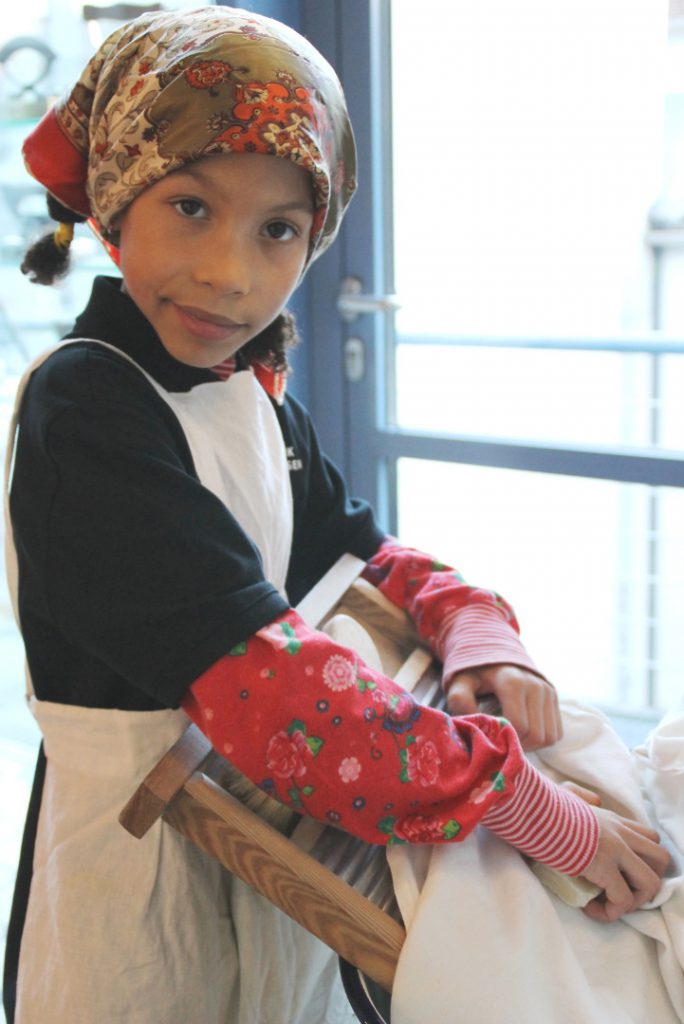
Step 5: Rehearsals and acting training – becoming an actor
The first walks through the exhibition with the finished script in step four were just test runs to see whether the script would work with the chosen parts of the exhibition. The rehearsals started the moment all props were available and the children could dress up. Now the exhibition space became a stage. The biggest challenge for the museum educators was to keep the children to a realistic time and scale. While acting the children were continuously developing new ideas and coming up with further additions that they now remembered from the first tours and considered important.
During the first rehearsals the actors were allowed to use their scripts, but soon the museum educators banished the scripts, because the children tended to read their lines, instead of using free speech, even when they knew their roles by heart. Some even memorised the roles of their fellow actors.
During rehearsals it became more evident that some children had a hard time standing still and focusing. That was even more noticeable when they had to wait during the scenes of the other actors. One boy in particular – who had a diagnosis of attention deficit hyperactivity disorder[15] – often distracted his fellow team members and caused upheaval among the group. The issue of focusing was not the only problem. Other issues for the children were poor pronunciation, difficulty in projecting their voices and the inability to use expressive body language.
It was clear that further training in dramatic skills would be invaluable to the children. Early on in the project planning we had engaged a drama teacher, who was trained and experienced in working with children and was booked to perform two general acting workshops independently of the actual play and the roles. The workshops didn’t take place in the exhibition, but in a large room with enough space for motion exercises and so remote that performing even noisy speech exercises could not bother anyone. Under the teacher’s guidance the children learned to speak loudly and clearly. They also, almost involuntarily, developed a new perception of body feeling and self-awareness. Various exercises designed to improve facial expression and body language were met with great enthusiasm. In the course of the training the children gained more and more self-confidence. The improved language skills and the newly learned art of mimicry were not only hugely enjoyable for the children, but had a positive effect on the acting. It was not initially planned for the drama teacher to accompany the children in the rehearsals but it appeared to be reasonable to proceed this way and we decided to extend her engagement. The drama teacher supervised a few rehearsals and the young actors became better and better. In addition, she taught the children some insider tips that professional actors use to reduce stage fright.
Step 6: Highlight and closing event – presenting Journey through Time
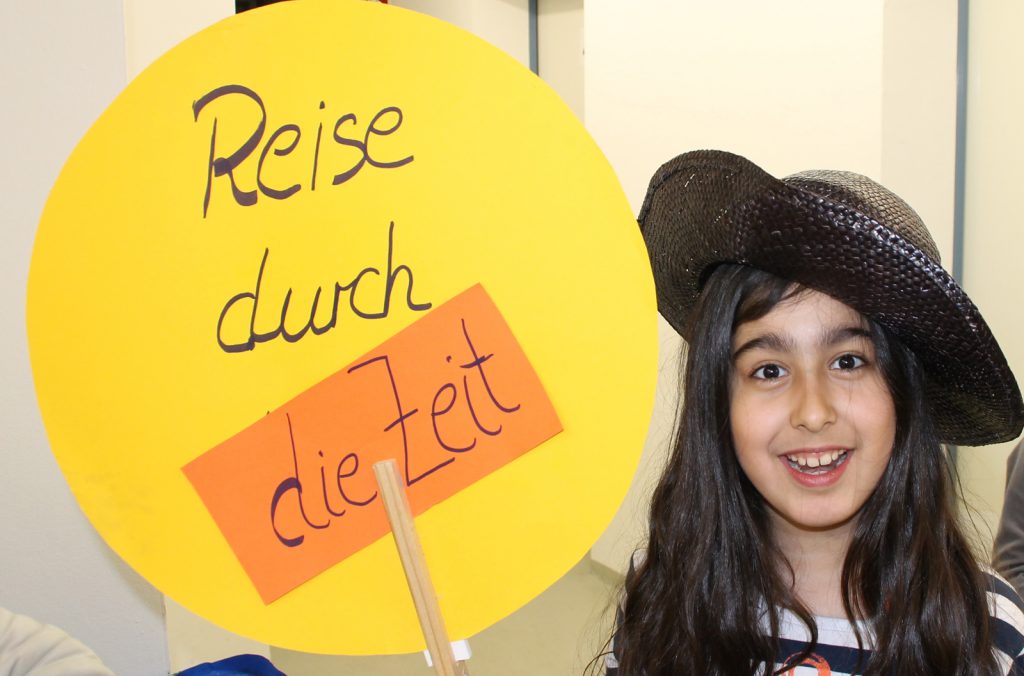
After twelve weeks of learning, training and rehearsals the day came to present the stage play to a live audience. Friends and families of the actors attended the premiere, along with other families who were visiting the Museum on that Sunday afternoon. Many families had read about the project and understood that it was a form of guided tour particularly suitable for children. The more than one hundred spectators somewhat overwhelmed the actors at the beginning. One little boy even asked: “Sabine, did we know that so many people would come? You didn’t tell us!” But soon they forgot the audience and started their performance of Journey through Time. The children slipped into their roles as craftsmen, hairdressers, housewives, laundresses, maids or ladies, operating the objects and telling their stories.
In the performance a travel guide, equipped with a large sign, so that nobody gets lost, welcomes the audience as fellow travellers and leads them from one attraction to the next announcing the stopping points and providing general information such as: “Our first stop will be at the factories over there. More than 125 years ago, factories already generated electrical energy for their machines. Here you can see the proud factory owner and his business friend.” Snapping their fingers the tour guide animates a frozen tableau and the actors start their play discussing the advantages of the newest technical achievement: a generator.
The final rehearsal the day before had been an absolute catastrophe, because suddenly no actor could remember their lines and keywords or manage the necessary rapid change of costumes (each actor had to play multiple roles). Nevertheless, the premiere went smoothly. The children even succeeded in solving a major problem. One girl didn’t appear for the first performance.[16] The group decided to split her parts among themselves and if necessary other actors prompted the replacements. The idea worked so well that the audience didn’t even notice that a problem had occurred.
For the very last time, there was another change of the script, though only a small one. One boy held a spray bottle in his hand when the performance started. When asked what he wanted to do with it, he just smiled mysteriously. The mystery was revealed as the tour group reached the tram. The moment the tram driver demonstrated his windshield wiper, suddenly water splashed onto the outside of the window. The boy had written himself a last-minute role into the play, calling himself ‘rainmaker’.
One hour later the final scene of the play took all the travellers and actors into our staging of a pub, where the whole ensemble started dancing to a rock n’roll song of the 1950s coming from the old jukebox. The performance was a great success, with the audience enthusiastically joining in with the singing and applauding the performance.
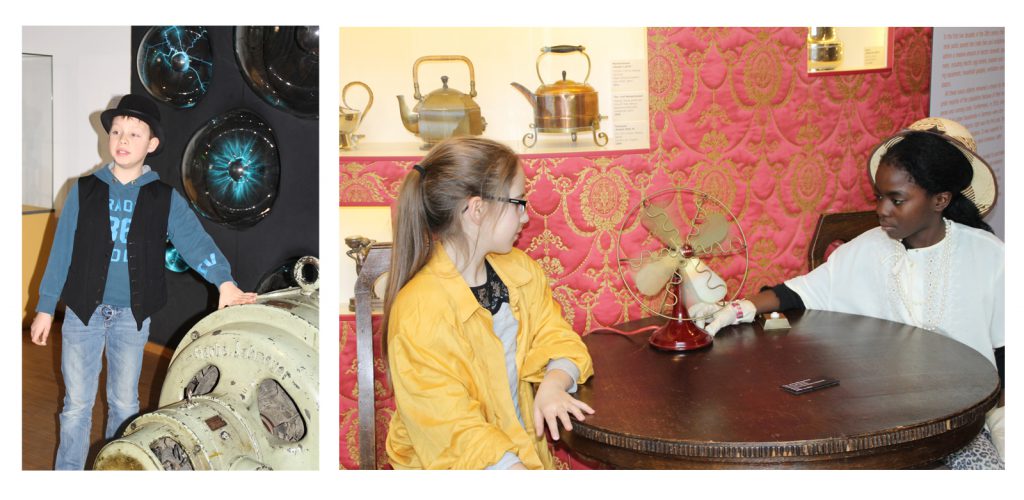
Evaluation
https://dx.doi.org/10.15180/180911/004Our grant application was based on a detailed pedagogical concept that outlined both the overall project goals and detailed descriptions of which skills and competences children would acquire and which pedagogical measures could be used to achieve this objective. Linguistic competence, social competence, self-competence, historical competence and creative-artistic competence should be mentioned as particularly important here. To what extent the intended goals were achieved and up to what level depended to an extent on the personality of the child. Yet as a pilot project mistakes were always going to be made and the experience and evaluation provided an opportunity for the Museum to learn how to make improvements and run better programmes in future. Although an accurate measurement of success is difficult, some statements can be made.
The evaluation summarised the impressions and assessments of all involved parties. Internal evaluation, the observations of the alliance partners and educators, the children’s statements and the feedback from the parents were included in a final report to the funders.
In addition, continuous assessment was done throughout the project. A detailed project diary was kept which documented the current events, project schedule, organisational procedures and assessments after the individual meetings and workshops. These observations were discussed and evaluated in regular team meetings with museum management, the museum’s own staff and the museum educators supervising the project.
We started the project with fourteen children, all between 9 and 10 years of age. Eight children had a migrant background, two came from large families with five or more children, at least three lived with single mothers or fathers, all came from families that are generally considered educationally disadvantaged. The children represented exactly the target group we wanted to reach. Visiting the schools with the Museum suitcase proved to be an effective means of recruitment and the use of the educators of the after-school clubs to help with the choice of children was the right decision.[17]
Not only were more children registered than expected, but surprisingly all the registered children regularly took part and were involved until the end of the project. This may be taken as a sign that the contents of the project were exciting and so varied that the children did not lose the desire to participate. From the very beginning, we had emphasised the need for a very varied programme with new and surprising elements for each meeting so that motivation levels remained high. This is an approach we would continue in any follow-up project.
However, it was necessary to modify the course of each session structurally at some points. Our schedule was too tight in some places. We overestimated what can be done in the three hours of the afternoon meeting. It turned out to be very important to create a window for relaxation. At least half an hour at the beginning of each meeting and a few minutes at the end had to be available as free time so that the children could relax by romping, eating, sitting together, and talking after the school day. It makes more sense in future to schedule more project days than to overload the individual meetings and overburden the children.
Reducing the agenda is one learning point, but it was just as important to streamline and control the timing and agenda more closely. Allowing the children to constantly change the script was a mistake, causing unnecessary confusion and loss of time. The same applies to the choice of costumes. We had a large collection of costumes with several hats, handbags, jewellery and other stuff for dressing up, as a grande dame for instance. The girls constantly changed their costumes and tried to be the first to get hold of a particular hat or bag. The costumes have to be fixed at a reasonably early point for individual parts. That seems such an easy and sensible thing to do, but unfortunately we didn’t do it. Partly because the children had so much fun dressing up differently and the museum educators did not want to take away their fun, and partly because they became aware of the problem of this open-ended approach too late. Again, this is something we would change in future programmes.
Regarding the intended acquisition of skills and competences, the internal evaluation showed the following result. Not only did we discover that the children had acquired a great deal of knowledge, it also became apparent that a bond was created between the children and the Museum and that they felt they were part of the Museum team. The visual and physical elements of belonging, such as polo shirts and name badges have contributed significantly to this identification with the Museum. Even small things, such as the opportunity to get a drink from the kitchen at any time, were important in this process. Entering the kitchen of the Museum café with the large ‘Staff only’ sign at the door and leaving with a drink in sight of the café visitors, visibly boosted children’s self-confidence and self-esteem every time.
The participants developed a strong sense of belonging, helped and supported each other during rehearsals and were able to autonomously discuss the issue of the missing fellow actor and also make a joint decision to solve the problem.
The measurable improvement in the expressive use of voice and body was primarily due to the good work of the drama teacher. We can highly recommend conducting such workshops regardless of stage plays. Learning to articulate loudly and clearly, to control and use one’s body language and to maintain eye contact with the audience is a desirable skill to achieve. Not only have we noticed the improvements, but our alliance partners in the after-school clubs made similar observations in their daily dealings with the children. We were particularly pleased that the parents also confirmed the correctness of our assessment.
During the project we already had direct and ongoing contact with those parents, who picked up their children at five o’clock, and we received some feedback at these times. However, due to the shortness of time, we were only able to hold brief conversations in passing. Our most important sources for the parents’ views of the project were the interviews following the performance and the evaluation questionnaires sent out afterwards.
We had designed a different questionnaire for parents and children and distributed it at the closing event. Most parents filled in the sheets on their own. In case of a lack of language skills our trainee – a young woman of Turkish descent – took over the survey, translating the questions and answers.
It was particularly important to us to confirm which activities the children enjoyed most and which parts of the programme they did not like. Multiple answers to these questions were possible. Based on our observations and the direct feedback during the course of the project we had clear expectations and our assumptions turned out to be correct. The drama lessons and rehearsals were very well received, and exploring the Museum’s storerooms and operating the exhibits were very popular too. Several children explicitly mentioned ‘It was great to be allowed to have something to drink at any time’. We only got one answer to the question regarding unpopular actions. One boy succinctly replied, ‘the pub’. We were able to surmise that the child who completed that questionnaire was a boy who had considered dancing to be embarrassing.
After the performance the families remained at the Museum for more than two hours and thus provided us with a unique opportunity for more in-depth conversations. Frequently we heard “I was rather sceptical about this project and above all in a museum but my grandson loved telling everybody about his ‘important job’”; “I never thought my daughter would enjoy that” or “It is unbelievable that my daughter would voluntarily memorise and recite something. At school she is as mute as a maggot.” Incidentally, the very same daughter responded on the questionnaire ‘I liked best learning to speak loudly’. A mother laughingly told us her son constantly talked about his roles and costumes and that he had sent her shopping only the day before. She had to buy a spray bottle which seemed to be absolutely necessary to use as a prop – it was the mother of the ‘rainmaker’ from the tram scene.
These parents supported their children in participation. More problematic were the families with whom we had no contact, who neither responded to letters or emails nor to calls (a well-known problem according to the school educators) and who did not show up for the performance. Especially in the case of the one girl, who was not allowed to attend the performance as the mother had other plans that day, it was very obvious that the mother did not support the participation of her daughter. It was equally frustrating for us noticing the disappointment of those two girls whose parents didn’t come to the final performance. We commiserated with the children but could only tell them how great they had done and how proud we were of their achievements. The probability that this scenario will occur in future projects is high. We don’t have a solution to this problem.
Apart from this small drawback the closing event was a highlight for participants. In parting, both children and parents emphasised the explicit wish for future projects to take place.
However, there was one remaining task to accomplish, namely performing the play for the children’s peer-group during holidays. Due to the successful premiere the initial timidity to play act in front of their classmates vanished. The spectators from the surrounding elementary schools gave enthusiastic applause after the show. At the performance we also tried to encourage more children to join the next project and some showed great interest.
In summary it can be stated that the project was well received by all participants. The format of creating a dramatic performance has proved to be especially effective with this audience group. The children have benefited from the project and the Museum has not only succeeded in reaching this target group and binding them to the Museum but has also been able to intensify the relationship with the schools. The good cooperation with our alliance partners not only provides the foundation for long-term commitments but is also an important precondition for mutual future projects.
Due to the successful pilot project we obtained follow-up funding. The German Museum Association has funded two additional projects[18], which essentially corresponded to the proven concept but took into account the necessary modifications indicated by the evaluation of the pilot and mentioned above.
We are very pleased that even now – two years after the first project started – several of the original children still visit the Museum at weekends or during holidays wearing their polo shirts and name tags. Some just play in the exhibition, others even have the courage to address visitors, offering to show them around, explain a certain exhibit or switch on the juke box.
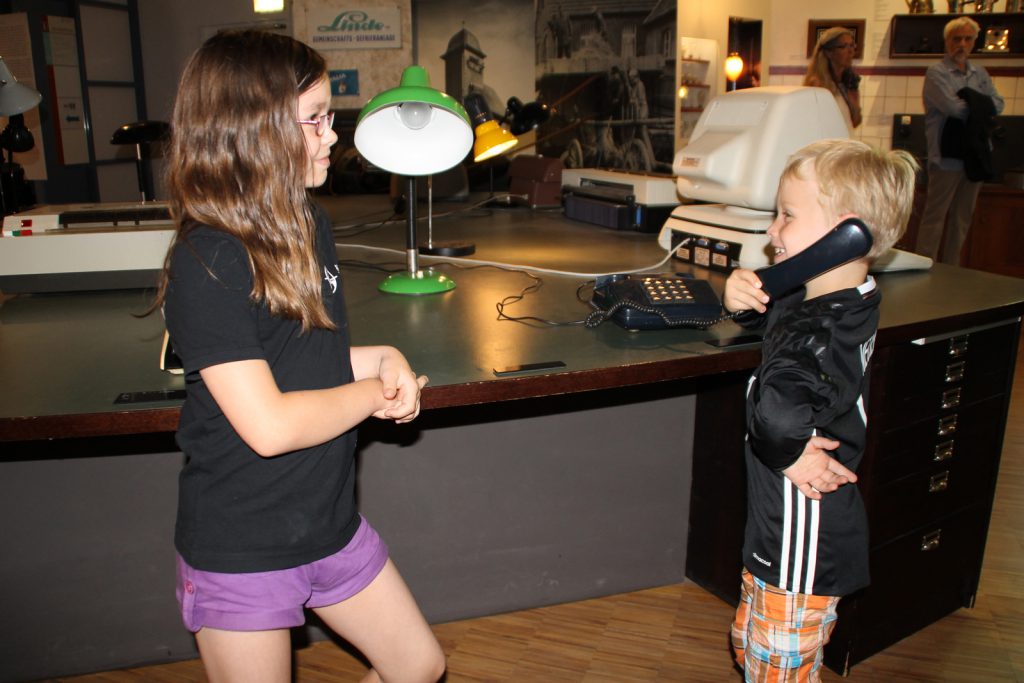
In order to strengthen the bond between children and the Museum and to encourage a long-term engagement we are planning to establish a Museum club. Starting in May 2018 the club will put its first project into practice by creating an exhibition on the topic of ‘Children’s Toys through the Ages’.
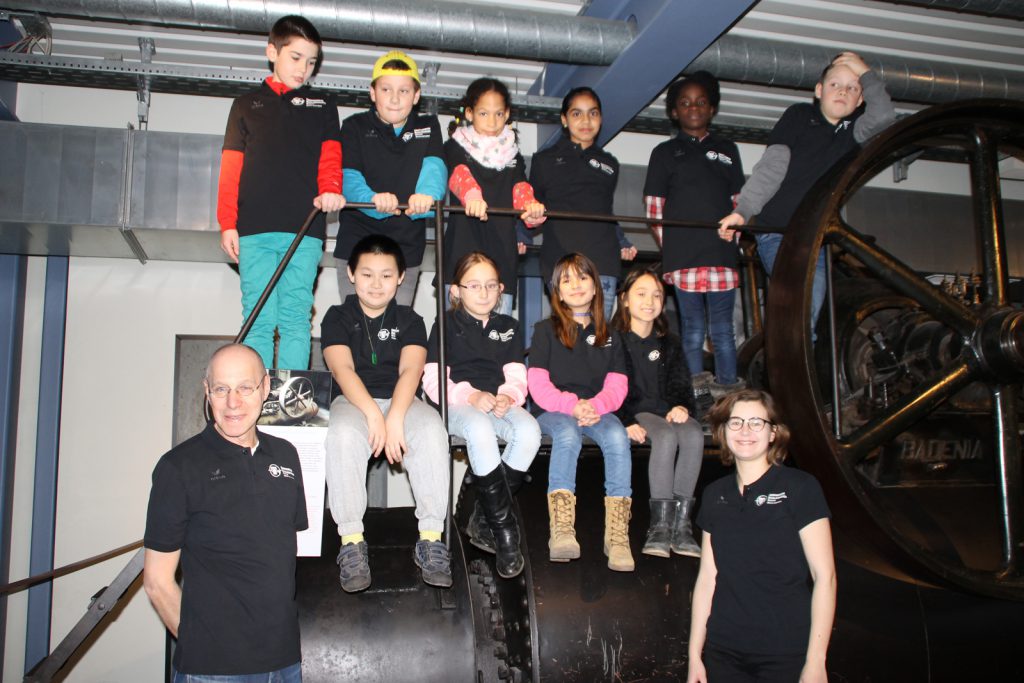
Tags
Footnotes
Back to text
Back to text
Back to text
https://www.bmbf.de/de/kultur-macht-stark-buendnisse-fuer-bildung-958.html
http://www.museumsbund.de/ http://www.museum-macht-stark.de/ Back to text
Back to text
Back to text
Back to text
Back to text
Back to text
Back to text
Back to text
The site http://www.kinderspielentheater.de/ contains comprehensive information including the evaluation of individual projects. See also Bönnighausen, Marion/Langkau, Thomas/Wehling, Jürgen, Kompetenzerwerb durch Theaterspielen? in: Grundschulunterricht 9, 2007, S. 25-30
Fischer, Antje/Schneider, Markus, Kinder spielen Theater. Projekt der Universität Duisburg-Essen in Zusammenarbeit mit Schulen, in: Schule NRW 5/11, S. 227-229
Haupt, Wolfgang/Langkau, Thomas/Wehling, Jürgen, Theater spielen mit Kindern, in: Essener Unikate 24 (Bildungswissenschaften), 2004, S.118–129
Haupt, Wolfgang/Langkau, Thomas/Wehling, Jürgen, Naturwissenschaft und Techniklernen durch Theaterspielen, in: Sonderheft Grundschulunterricht, 2007, S.17–22 Back to text
Back to text
Back to text
Back to text
Back to text
Back to text

